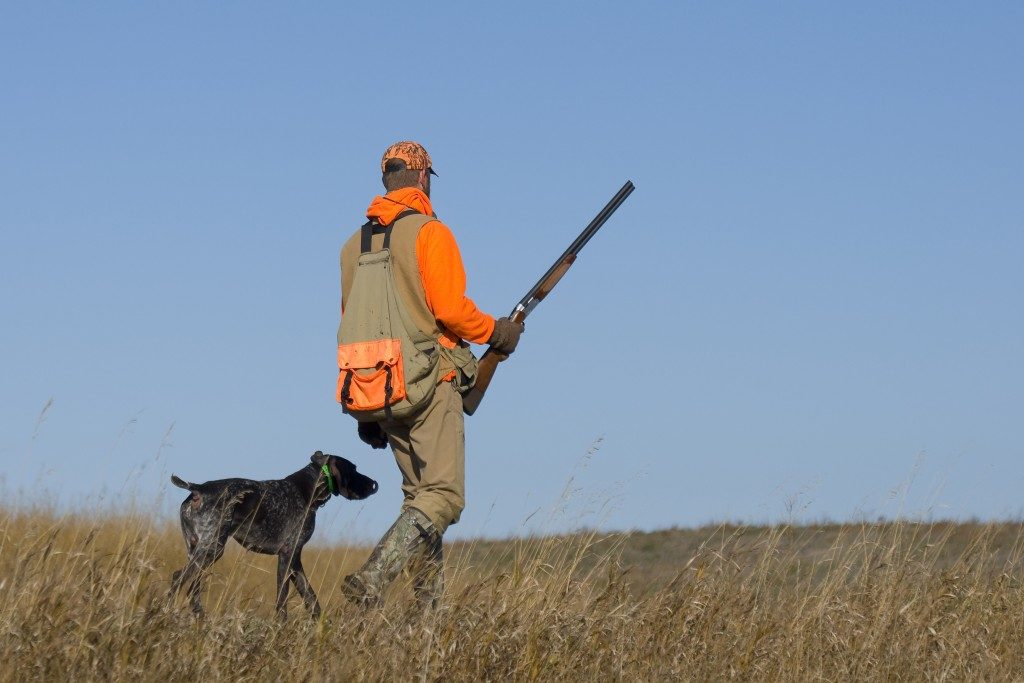Ask a waterfowler what they’re looking for in a shotgun, and they’ll answer with one word – comfort. This might be a surprise for beginners in duck hunting. You’d think a gun’s range or stopping power would be on the top of their minds.
But it’s more about choosing a gun you’re comfortable spending a lot of time with. Read on to find out what you need to look out for when buying a shotgun:
1. Weight
You might be fit and strong, but imagine carrying a shotgun around with you all day. Remember that in the real world you’ll be hefting it through dirt, water, mud, and snow. Find a gun that you wouldn’t mind lugging around in all kinds of terrain.
A gun that’s too heavy for you has a lot of cons: it will be harder to mount on your shoulder, exhaust you faster, prevent good shooting form, and can cause you to miss. Try slinging on as many guns as you can before purchase. Most hunting stores here in Michigan will be happy to help you choose.
There are already a lot of challenges in the real world of duck hunting, so don’t let your gun’s weight be another one.
2. Stock Length
More and more women and children are trying out hunting for the first time. This is why shotgun manufacturers have now come up with options for “Ladies and Youth.” They’ve made shotguns with shorter stocks so people with smaller builds can handle them.
The stock is meant to be mounted on your shoulder for steady aim. However, most shotguns are designed for men averaging around 5’10” in height – so women and children usually have to mount their guns on their upper arms instead. This can be bad for shooting form and recoil.
So if you’re not particularly tall, don’t be shy to look for a shotgun with a shorter stock. You’ll save yourself a lot of grief later on if you do.
3. Barrel Length
Apparently, there is a lot of debate out there on barrel length and why it’s crucial. The short answer is: the length of the barrel determines the quality of the swing. The longer the barrel, the heavier it is, so you’ll have a bit more control when you swing it. The lighter the barrel, the less control you’ll have.
Why is the swing important? Duck hunters have a saying, “Butt, belly, beak, bang!” This means you should aim for the butt of a bird, move over to the belly, swing your aim to the head, then keep your aim a little beyond the head, and fire.
This follow-through action lets you fire again if you miss the first time, as you’re still following the bird.
4. Recoil
The lighter the gun, the more recoil you’ll feel. The reason is that heavier guns absorb recoil better. Bad recoil can damage the small bones in your wrists over time. Avoid this by getting recoil-reducing attachments that can be connected to the stock, or the magazine.
If you’re strong enough, you should be able to carry a heavier gun. But as veterans can tell you, the best way to reduce recoil is to have a good shooting stance.
5. Price
A cheaper gun in the $300 range can last you around three to four years with heavy use. But if you don’t shoot every weekend, it could last even longer. An expensive gun in the $800 range can last five years or more.
Be warned about cheaper shotgun models: They’re reliable for a few good years, but the wear and tear can eventually break it down. A duck hunter even joked about how he brought a screwdriver around in the field as a charge handle. Rest assured, he got teased for it. His message was: you get what you pay for.
Getting to Know Your New Gun

After all the time and care you’re going to put into setting up your decoys and waiting in the blind, you don’t want to miss your shot once the birds land on the water. Be a better hunter by choosing a gun that you can handle.
Just remember to go practice-shooting with your new shotgun before you go out into the real world.

